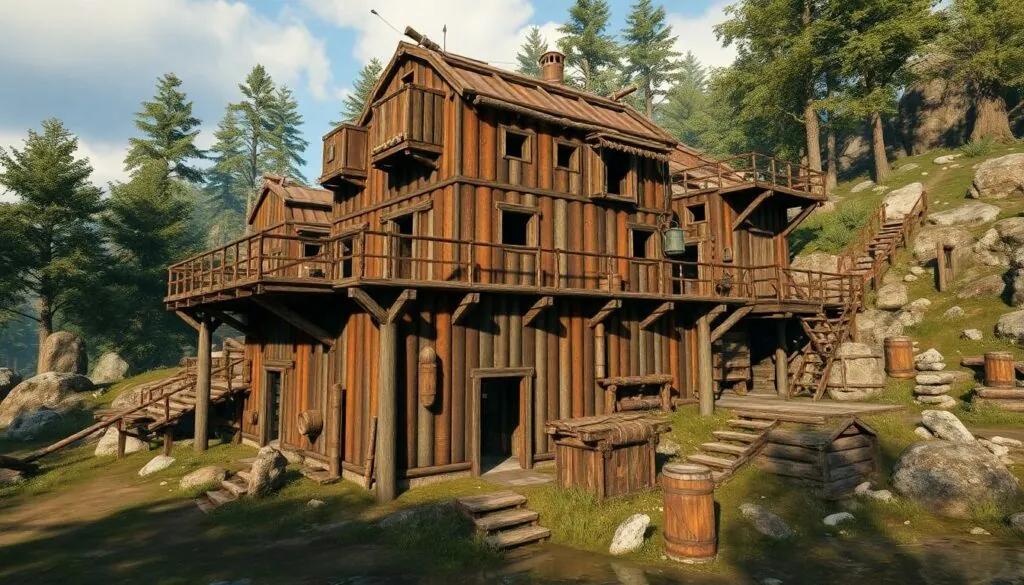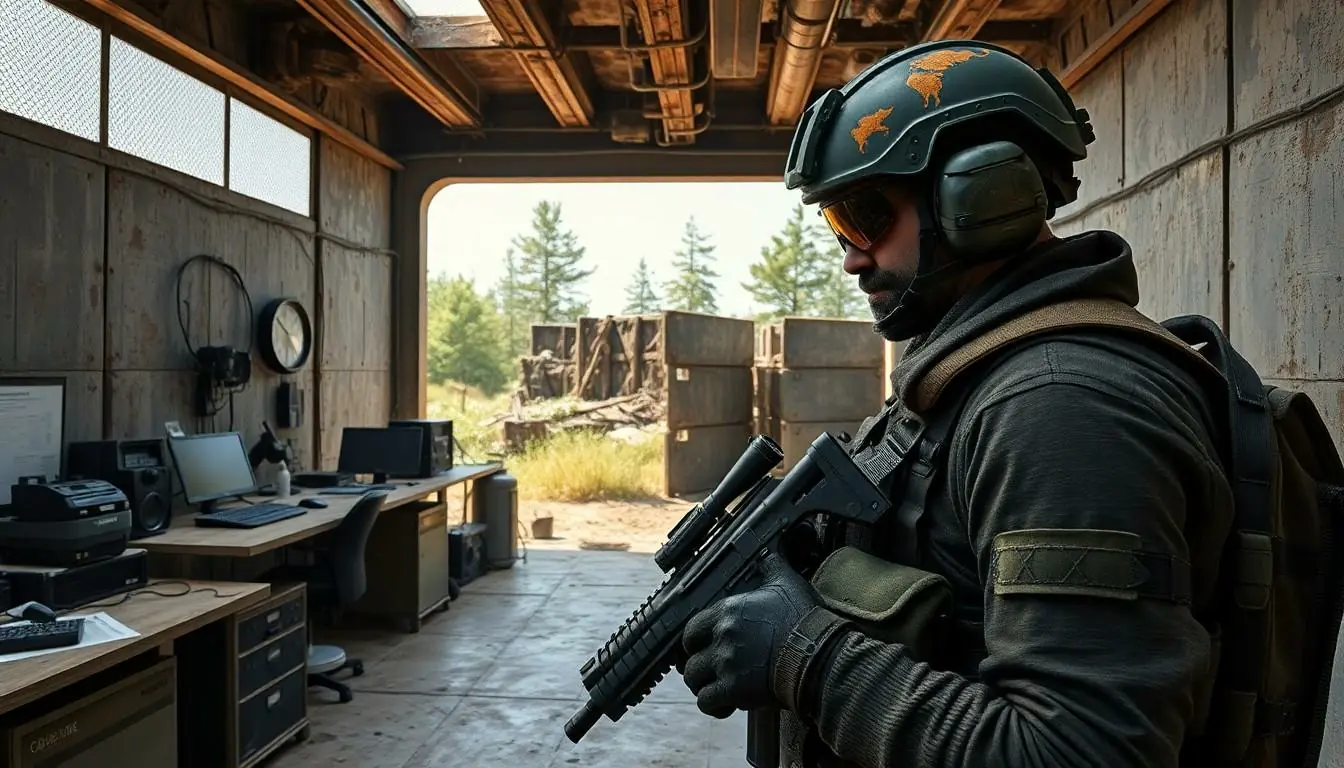In the wild world of gaming, few titles have captured the hearts of survival enthusiasts quite like Rust. With its unforgiving landscapes and relentless competition, players constantly seek the upper hand. Enter the realm of “rust builds.” These ingenious constructions aren’t just wooden shacks; they’re fortresses of creativity designed to keep enemies at bay and resources safe.
Table of Contents
ToggleOverview of Rust Builds
Rust builds refer to unique player-designed structures within the game, aimed at resource protection and strategic defense. Players utilize various materials to create these builds, enabling them to withstand attacks and offer safe havens for gathering supplies.
Designing an effective rust build often demands creativity and strategic planning. Players assess their surroundings and incorporate environmental features into their structures. Adaptability plays a critical role; successful players often modify their builds in response to evolving threats and gameplay dynamics.
Types of rust builds include bases, towers, and bunkers. Bases can serve as homes and storage areas, while towers offer elevated vantage points for surveillance. Bunkers act as fortified shelters, designed to resist enemy fire and shield players from harm.
Each build type carries specific advantages. Towers maximize visibility, allowing for scouting and early threat detection. Bunkers provide robust protection during raids, enabling players to stockpile resources. A well-constructed base ensures a player’s long-term survivability and success in the harsh world of Rust.
Community sharing enhances the development and improvement of rust builds. Players often post blueprints and detailed guides online, fostering a collaborative environment where others can learn and innovate. Engaging with the community inspires new ideas and allows players to discover hidden strategies.
Resources for building in Rust include guides, forums, and videos. Tutorials often break down advanced construction techniques, making it easier for newcomers to understand the mechanics. By leveraging these resources, players can enhance their building skills and develop unique designs that stand out in the game.
Key Features of Rust Builds
Rust builds feature integral elements that enhance gameplay and survival. Players design these structures strategically, focusing on performance and safety.
Performance Enhancements
Performance enhancements are paramount for building efficiency. Optimized layouts allow for greater resource gathering and quicker access during raids. Players often incorporate multiple levels and strategically placed workstations to streamline actions. Choosing durable materials improves structural integrity, enabling builds to withstand various attacks. High visibility areas help monitor surroundings, enhancing defense capabilities. Such considerations create a dynamic building experience, promoting faster adaptation to threats. Incorporating these enhancements elevates gameplay while ensuring robust protection.
Safety and Reliability
Safety and reliability rank high in essential features of rust builds. Secure designs thwart enemy incursions while safeguarding resources. Innovative designs like hidden entrances and external traps deter attackers effectively. Building with reliable materials ensures structures endure harsh conditions over time. Players regularly incorporate reinforced walls and barriers to bolster defense. Establishing escape routes further enhances survival chances during raids. Collectively, these elements form sturdy and dependable refuge in the chaotic world of Rust, offering peace of mind to players amidst constant threats.
Popular Rust Builds
Rust players utilize a variety of builds tailored to specific gameplay needs. Each build type serves unique purposes, enhancing survival and effectiveness.
Build for Web Applications
Player-designed builds for web applications focus on efficiency and speed. These structures often prioritize resources like server access and crafting stations. An effective web app build typically incorporates modular designs, enabling quick expansions as player needs grow. Utilizing robust materials ensures durability, while strategic placement of components enhances accessibility. These builds often serve collaborative functions, allowing teams to work seamlessly against threats. Community blueprints help players refine their approaches, resulting in improved resource management.
Build for Game Development
Game development builds emphasize creativity and functionality. They provide optimal environments for testing and launching new game features. Players often design these builds with intricate layouts to support diverse activities. Effective game development structures include well-organized zones for testing mechanics and debugging. High visibility areas within these builds allow developers to monitor gameplay effectively. Using community resources empowers players to innovate while building responsive gameplay environments. Each build contributes to a more immersive experience, enriching the overall learning and development process.
Setting Up Your Rust Build Environment
Setting up a Rust build environment involves several essential steps. First, players must install Rust, available through platforms like Steam or directly from the official website.
Next, ensuring that the system meets the game’s minimum requirements is crucial for smooth gameplay. Players should verify hardware specifications, including a compatible operating system, sufficient RAM (at least 8 GB), and a decent graphics card.
After installation, configuring the game settings can enhance the user experience. Lowering graphical settings may improve performance on lower-end systems. Adjustments to key bindings help streamline gameplay, making actions more intuitive.
Utilizing community resources significantly benefits players during the setup process. Forums and guides offer tips that enhance building strategies and gameplay efficiency. Watching video tutorials also provides visual cues that can clarify complex concepts.
Creating an organized workspace is another astute step. Players should allocate designated locations for gathering materials and constructing buildings. Establishing a methodical approach ensures a smoother building experience.
Integrating mods and plugins enhances the gaming experience, but compatibility is essential. Players should research available extensions that align with their gameplay style. Testing these modifications in a safe environment helps avoid performance issues.
Lastly, staying informed about updates and patches maintains an optimal gameplay environment. Regularly checking the official Rust website or community forums prevents potential issues with builds and performance. Following these guidelines ensures a robust setup that facilitates diverse and innovative rust builds, fostering both survival and creativity.
Conclusion
Rust builds are more than just structures; they represent a player’s ingenuity and survival strategy in a demanding environment. By focusing on adaptability and creativity, players can design effective builds that not only protect their resources but also enhance their overall gameplay experience. The importance of community collaboration cannot be overstated as it fuels innovation and offers valuable insights for players looking to refine their designs.
As players continue to explore the depths of Rust, the evolution of rust builds will undoubtedly shape the future of gameplay, making it essential for enthusiasts to stay engaged with the latest trends and techniques. Embracing these principles will lead to greater success and enjoyment in the ever-challenging world of Rust.








